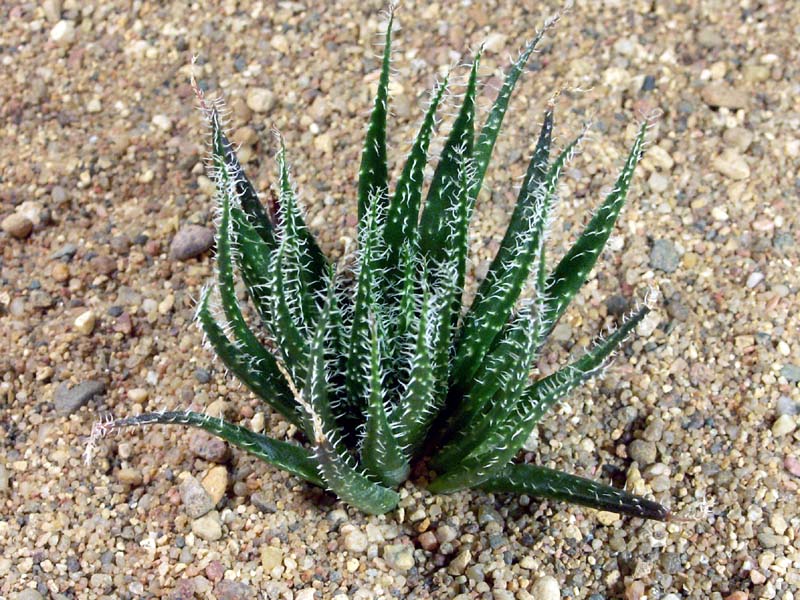Also posted at SentientMeat.Net
Aloe haworthioides (Baker, Central Madagascar) has been blooming for over a week. It's diminutive at just 3 inches across.- Aloe haworthioides Baker, 3" pot, in full fragrant bloom. Flowers smell sweet, almost like orange blossoms.
Aloe haworthioides startled me with the delicious sweetness of its fragrance. You have to sniff very close, but then it smells gorgeous.
The genus Aloe practically defines the pursuit of defining genus of cactus and succulent culture. You can grow giant tree aloes up to 15 meters in height—Aloe barberae, Aloe pillansii, Aloe dichotoma, just to name 3. I have humble specimens of all three, and I love them.
To Aloe barberae's dragon, Aloe haworthioides is a dragonfly .
Aloe haworthioides is named for the resemblance to its cousins in genus Haworthia. This resemblance is not coincidence; Aloe and Haworthia are genetically close and they hybridize easily.
Speaking of hybridizing, Aloe haworthioides is often used in aloe breeding. Its beauty and promiscuity are also drawbacks: many plants billed and sold as Aloe haworthioides are actually careless crosses from uncontrolled pollination. Sounds sexy... but be careful out there!
In the wild, it makes its home in the central mountains of Madagascar at an altitude of 1200-1800 m above sea level. Although a slow grower, it forms offsets and can reportedly be propagated by cuttings, i.e. removing these offsets.
Aloe haworthioides is stemless, perennial and herbaceous.
Here are some more technical details, cribbed from Peter Lapshin's site. (Someone—Saturn, Santa, or Satan—needs to bring me the new comprehensive book on the genus, Aloes: The Definitive Guide.)
Each plant body has up to 100 leaves, 3–4 cm long, approximately 6 mm wide, gray-green with white buds, arranged in a dense rosette diameter of 4-5 cm, leaf margins with harmless white hairs or spines. Flower stems 20-30 cm tall, flowers fragrant, white or pale pink, 6-8 mm in length.
- Aloe haworthioides from Peter Lapshin's site, http://www.lapshin.org/succulent/o-al-haw.htm
See Also
Aloe haworthioides at Peter Lapshin's siteAloe haworthioides at Dave's Garden PlantFiles




No comments:
Post a Comment